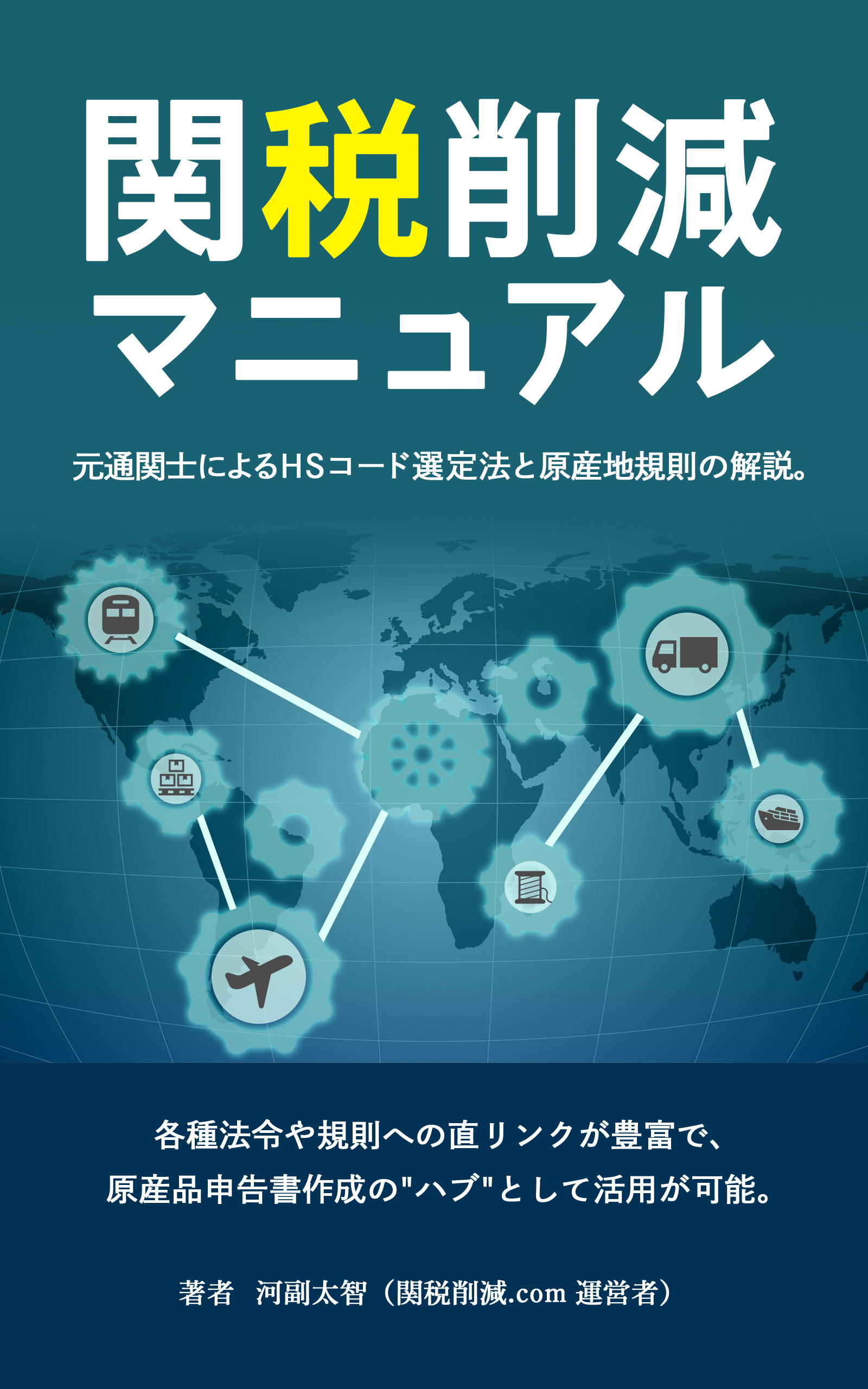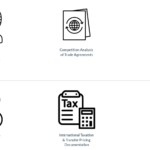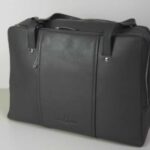品目分類の際に従う通則の英語版を紹介します。
外国人とHS分類に関して意見の相違が出た際に重宝します。
品目分類の方法は国際的に定められております
当サイトで紹介した日本語版の通則
日本の税関による関税率表の解釈に関する通則(PDF)
WCO(世界税関機構)からの通則解説(英語PDF)
上記ページではシンプルに通則を紹介しておりますが以下に
適用例を含めた解説を記載します。
目次
Rules of Interpretation
There are six General Rules used in interpreting (applying) the Tariff. These are known as the General Rules of Interpretation (GIR) 1 through 6.
Rules one to four are related and must be applied in sequence. Rules five and six stand on their own to be applied as needed.
Rule 1:
The titles of Sections, Chapters and sub-Chapters are provided for ease of reference only; for legal purposes, classification shall be determined according to the terms of the headings and any relative Section or Chapter Notes and, provided such headings or Notes do not otherwise require, according to the following provisions [that is, GIRs 2 to 6]:Explanation: This is the first Rule to be considered in classifying any product. Most products are classified according to this rule.
For practical purposes, we can break this rule down into 2 parts:
1) The words in the Section and Chapter titles are to be used as guidelines ONLY to point the way to the area of the Tariff in which the product to be classified is likely to be found. Articles may be included in or excluded from a Section or Chapter even though the titles might lead one to believe otherwise.
2) Classification is determined by the words (terms) in the Headings (the first four numbers) and the Section and Chapter Notes that apply to them unless the terms of the heading and the notes say otherwise. In other words, if the to be classified are covered by the words in a heading and the Section and Chapter Notes do not exclude classification in that heading, the heading applies.
So find a Heading that is worded in such a way as to include the product in question. And carefully check the Section and Chapter notes to see if the product is mentioned specifically as being included or excluded.
Many should be correctly classifiable by reference to Rule 1 alone. If the results of this process are ambiguous and two or more Headings appear to be applicable, then Rule 3 should be applied. When you read Rule 2 you will see why it would not be next Rule in such cases.
Simple Example: If you were importing Christmas tree candles, it would seem logical to classify them with Classification Number 9505.10.00.90: Other, articles for Christmas festivities. However, when reading the Notes to Chapter 95, it clearly states this Chapter does not cover Christmas tree candles. In fact, we must classify them with the Classification Number 3406.00.00.00: Candles, tapers and the like.
Rule 2
(a)Any reference in a heading to an article shall be taken to include a reference to that article incomplete or unfinished, provided that, as presented, the incomplete or unfinished article has the essential character of the complete or finished article. It shall also be taken to include a reference to that article complete or finished (or failing to be classified as complete or finished by virtue of this Rule), presented unassembled or disassembled.
(b)Any reference in a heading to a material or substance shall be taken to include a reference to mixtures or combinations of that material or substance with other or substances. Any reference to of a given material or substance shall be taken to include a reference to wholly or partly of such material or substance. The classification of of more than one material or substance shall be according to the principles of Rule 3.
Explanation: Rule 2 (a) deals with the classification of unfinished, incomplete, unassembled or disassembled . Unfinished and incomplete can be classified under the same Heading as the same in a finished state provided that they have the essential character of the complete or finished article. As well, unassembled or disassembled may also be classified the same as the complete finished product. This rule does not apply if the text of the Heading or the relevant Legal Notes exclude the unfinished or unassembled product in question.
Example: An automobile missing only its wheels would be classified the same as if it were complete.
Explanation: Rule 2 (b) lays the groundwork for dealing with products, not classifiable through the use of Rule 1 or Rule 2 (a), which are composed of a mixture of or substances. It basically states that a Heading referring to a given material or substance includes mixtures of that substance with others. Similarly, a reference to a product composed of a given material or substance includes products composed either wholly or partly of the material or substance. This means that a mixed product may seem to be eligible for classification under two or more Headings. However, a given product can legally only be classified under one Heading. Rule 3 must be used to decide between alternate Headings.
Example: If you were importing dicalcium citrate, the Tariff does not specifically state this compound. However, it is a compound containing more than one material and its essential character is that of a salt of citric acid. Therefore, dicalcium citrate qualifies as Classification Number 2918.15.90.19: Salts and esters of citric acid, Other.
Rule 3:
When by application of Rule 2 (b) or for any other reason, are, prima facie, classifiable under two or more headings, classification shall be effected as follows:
(a) The heading which provides the most specific description shall be preferred to headings providing a more general description. However, when two or more headings each refer to part only of the or substances contained in mixed or or to part only of the items in a set put up for retail sale, those headings are to be regarded as equally specific in relation to those , even if one of them gives a more complete or precise description of the .
(b) Mixtures, of or up of , and put up in sets for retail sale, which cannot be classified by reference to 3(a), shall be classified as if they consisted of the material or component which gives them their essential character, insofar as this criterion is applicable.
(c) When cannot be classified by reference to 3(a) or 3(b), they shall be classified under the heading which occurs last in numerical order among those which equally merit consideration.
Explanation: Rule 3 (a) states that where 2 or more Headings seem to apply, the one which provides the most specific description of the product in question should be used. This means that a Heading which names the actual product should be used in preference to one which only names a category to which the product could belong. Similarly, a Heading that describes the whole product should be used in preference to one which describes part of it. However, where two Headings both only describe part of the product, this rule cannot be used to tell which one to use even if one seems more specific or detailed than the other.
Example: Mint tea is not stated specifically, as a product, in the Tariff. Although the product descriptions available are mint and tea, the importer must classify mint tea under the appropriate tea Heading because it provides the most specific product description and mint is only the flavour of the tea.
Explanation: Rule 3 (b) applies to mixtures, and sets that cannot be classified by use of the previous Rules. These should be classified as if they consisted of the material or component which gives them their essential character.
Example: An importer bringing in “liquor gift sets” (that include the bottle of liquor and glasses) must classify the under the appropriate liquor Heading. The essential character of the item is the liquor itself and not the glasses contained within the set.
Explanation: Rule 3 (c) is for use in cases in which a good seems to fit in more than one Heading and the essential character cannot be determined. In this case, the product should be classified under the Heading which occurs last in numerical order.
Example: A gift set which includes socks (Heading number 6115) and ties (Heading number 6117) cannot be classified by the previous rule since neither item gives the gift set its essential character. The gift set must be classified under the Heading number for ties which is the Heading that occurs last in numerical order.
Rule 4
which cannot be classified in accordance with the above Rules shall be classified under the heading appropriate to the to which they are most akin.
Explanation: This is a “last resort” rule, most often used with new products.
Rule 5
In addition to the foregoing provisions, the following Rules shall apply in respect of the referred to therein:
(a) Camera cases, musical instrument cases, gun cases, drawing instrument cases, necklace cases and similar containers, specially shaped or fitted to contain a specific article or set of articles, suitable for long-term use and presented with the articles for which they are intended, shall be classified with such articles when of a kind normally sold therewith. This Rule does not, however, apply to containers which give the whole its essential character;
(b) Subject to the provisions of Rule 5 (a) above, packing and packing containers presented with the therein shall be classified with the if they are of a kind normally used for packing such . However, this provision does not apply when such packing or packing containers are clearly suitable for repetitive use.
Explanation: Rule 5 specifies how to classify containers. Rule 5 (a) deals with containers which:
- are shaped or fitted for the article they will contain,
- are suitable for long-term use,
- protect the article when not in use,
- are of a kind normally sold with such articles,
- are presented with the articles they are designed to contain.
Containers which have these characteristics can be classified with the products which they contain. However, in cases where the container gives the product its essential character, it would be the container which would have to be classified.
Example: Rule 5 (a) would apply to flute cases because flutes are normally sold with their cases (due to their specific shape) and are intended for long term use.
Explanation: Rule 5 (b) deals with other types of containers and packing . These should be classified with the they contain if they are of a kind normally used for packing such and are not suitable for repetitive use.
Example: An importer bringing in and using styrofoam chips for padding fits well into Rule 5 (b). Styrofoam chips are normally used for the padding and insulation of many , however they are rarely reused and are therefore classified with the when they enter Canada.
Rule 6
For legal purposes, the classification of in the subheadings of a heading shall be determined according to the terms of those subheadings and any related Subheading Notes and mutatis mutandis, to the above Rules, on the understanding that only subheadings at the same level are comparable. For the purpose of this Rule the relative Section and Chapter Notes also apply, unless the context otherwise requires.
Explanation: Once have been classified to the Heading level by the use of international Rules 1 to 5, then classification to the Subheading level can now take place by repeating international Rules 1 to 5 and taking into account any related Legal Notes.
Additional U.S. Rules of Interpretation
1. In the absence of special language or context which otherwise requires—
(a) a tariff classification controlled by use (other than actual use) is to be determined in accordance with the use in the United States at, or immediately prior to, the date of importation, of of that class or kind to which the imported belong, and the controlling use is the principal use;
(b) a tariff classification controlled by the actual use to which the imported are put in the United States is satisfied only if such use is intended at the time of importation, the are so used and proof thereof is furnished within 3 years after the date the are entered;
(c) a provision for parts of an article covers products solely or principally used as a part of such articles but a provision for “parts” or “parts and accessories” shall not prevail over a specific provision for such part or accessory; and
(d) the principles of section XI regarding mixtures of two or more textile shall apply to the classification of in any provision in which a textile material is named.






コメントを残す